| Botanical Name |
|
| Family |
Crassulaceae - The crassula family. |
| Pronunciation |
KRASS-yoo-la mul-tee-KAH-vuh |
| Common Name(s) |
IsiXhosa: intelezi; phewula
|
| Plant Group |
- Ground Cover A plant with a low-growing, spreading habit, grown specifically to cover the ground.
- Succulent A plant having fleshy stems or leaves often adapted to dry conditions.
|
| Plant Size |
- Medium
| Tree | 10m to 16m |
| Shrub | 1m to 2m |
| Perennial/ground cover | 40cm to 60cm |
| Bulb | 40cm to 60cm |
| Succulent | 40cm to 60cm |
|
| Position |
- Canopy Shade Canopy shade is found below closely grown trees where some light filters through. Ideal for the protection of herbaceous plants.
- Deep / Full Shade Shade below spreading evergreen trees where sun's rays are unable to penetrate the canopy at any time. For light sensitive plants
- Dry Shade Shady areas where soil has poor water retention or are dependent on rain for their moisture needs.
- Light or Dappled Shade Found below trees with sparse, open foliage. Ideal for the protection of herbaceous plants.
- Partial Shade The area is in shade for part of the day and in full sun for part of the day.
- Sun The area is in full sun for all or most of the day, all year round.
|
| General Information |
- Drought Tolerance: High The plant is well adapted to arid conditions; it can survive long periods of drought and high temperatures without extra water.
- Evergreen Plants that have leaves all year round.
- Frost: Tender A plant that will not survive any frost or low winter temperatures.
- Water Wise Plant species originating from low rainfall regions that require less water to survive and thrive than other plant species.
|
| Specific Information |
Crassula multicava is particularly useful for dry shade and to cover unsightly spots. Although tender to frost, I have grown this crassula successfully in protected positions in Johannesburg. There is a distinct difference in appearance depending on the position in which the fairy crassula is planted: in deep shade the leaves are larger and dark green and the plant has fewer flowers while in full sun the leaves are smaller and light green and flowering is profuse.
|
| Ad Break |
|
| Flowers |
| Description |
tiny stars on thin stems held above the leaves
|
| Season |
- Spring Plants will seldom bloom for the entire season as given in the list, but should flower during a period within these parameters.
|
| Colour |
|
| Growth Rate |
- Fast Specifying growth rate can be very misleading as there is considerable variation of growth rate depending on type and species of plant, available water, supplementary feeding, mulching and general care, as well as the plants suitability and adaptability to the garden environment.
|
| Plant Uses |
- Attracts bees, butterflies or other insects This plant attracts insects which can be food for birds or other creatures in your garden.
- Border A strip of ground, at the edge of a driveway or path in which ornamental plants or shrubs are planted.
- Container Trees, shrubs and ornamental species that can adapt to growing in a restricted environment.
- Edging A low growing plant that provides softness or definition to the edges of a bed or walkway.
- Filler Either a fast growing tree or shrub used temporarily to fill in an area while the permanent plants grow to a desired size, or a plant used to fill gaps in borders or beds.
- Ground Cover Low-lying plants that spread fast, require minimal maintenance, and cover large expanses or bare areas between bulbs or shrubs. They provide protection from erosion and drought and improve the visual appearance of the garden.
- Mass Planting Plants useful for filling a large area with just one or a few kinds of plants spaced close together. Creates a bold, dramatic effect and to reduces maintenance.
- Pioneer for new gardens A very fast growing plant, able to withstand hardship, that can be used to populate land that has recently been cleared of natural vegetation. These plants pave the way for slower-growing species by adding nutrients to the soil and creating leaf litter.
- Rock Garden An area constructed of larger rocks, arranged naturally, to emphasise the use of stones as a main element. Generally plants used do not need a lot of care.
- Stabilize Banks Plant is used to prevent soil erosion because their roots will form a mat that stabilizes the soil and keeps it from washing away in heavy rains.
- Suitable for coastal gardens Plants adapted to dry, sandy soil, forceful wind, limited rainfall and intense sunlight.
- Wild Garden An indigenous garden planted for the benefit of wildlife and birds. Provides food, water, a variety of mini-biomes and no poisonous chemicals are used.
|
| Distribution and Habitat |
from the southern part of the Western Cape, through the Eastern Cape to Natal and Mpumalanga, in thickets, along river and stream banks and in forest margins
|
| Planting Suggestions |
Crassula multicava responds well to pruning: use hedge cutters to remove as much of the foliage as you wish - recovery time is short and the reward is a dense carpet from which a pink mist of blooms will arise. Prune after flowering and seeding have taken place and again in early to mid- winter. Although very vigorous in well-composted, deep soils, this tough little crassula will thrive in clay or sandy soils. Give them a good start with some compost and mulch, and water until established. They propagate easily from seed, from stems and leaves that root and from tiny plants that grow on the tips of the flower stalks.
|
| Medicinal Uses |
It is used in traditional medicine as a strong emetic, and infusions of the plant are sprinkled around the homestead as a protective charm against lightning.
|
| Ad Break |
|


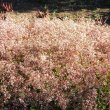
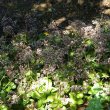
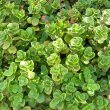
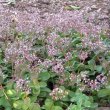
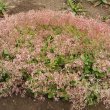
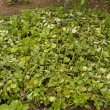



Comments
Crassula multicava
I have Crassula multicava planted in semi shade in my garden. In one section all the leaves are covered in grey scaly marks. Do you know what causes the blemishes?
Many thanks
Grey, scaly patches
Hi Colleen
My sincere apologies for not having replied to your query.
I have had the same grey scaly marks on many of my succulents over the years and I have never been able to find out what it is or how I can prevent it. Unfortunately it spreads rapidly as well. I think it is a kind of fungus I but have not found a fungal spray/powder that has any effect.
My only solution has been to destroy the damaged bits and make new plants from the healthy ones. Of course this does not work for long as there is always some residue that remains to start the ugly process all over again.
I would be so pleased if another reader can come up with a cause and solution.
Kind regards
Lorraine
Discuss this plant
Share knowledge, ask a question or give an experience.